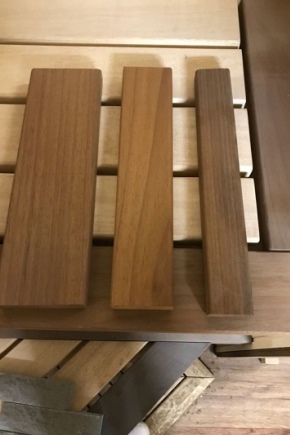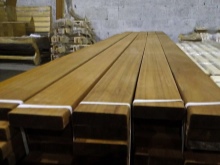What does abash look like and where is it applied?

Abash is a tree, the wood of which became quite popular on the Russian market in the 90s. We will describe below what kind of tree it is and what properties it has.

What it is?
Abash, abachi or African maple - it is an oak of the Malvov family, native to western and equatorial Africa... Most often, this African oak can be found in countries such as Ghana and Congo.
An adult tree looks pretty impressive. So, it reaches a height of about 40 meters, and its girth can be up to 3 meters. This plant is characterized by a lush and dense crown, however, it is located closer to the top, the rest of the trunk, as a rule, is bare and has no foliage or knots.
Abash is a light-loving tree that loves a spacious area, and therefore most often grows alone, away from other trees and shrubs.
Abash wood is highly prized. It was most actively used at the beginning of the 20th century to create furniture, musical instruments and more. On the Russian market, African oak wood appeared only closer to the 90s. The qualities and characteristics of this material were appreciated, and therefore the demand for it quickly rose.
At the present time, they are trying to maintain and restore this type of tree.



Property overview
Physical
The texture of the wood of this species is usually fine and even, and the structure and color are uniform. Plus, such wood does not emit tree resin, which sometimes happens with wood of other species, and is highly resistant to mechanical stress.
Its main physical property is reduced thermal conductivity and heat capacity.... According to these two criteria, African oak wood is in the lead. This property of the material plays an especially important role in the construction of baths and saunas. Due to the low thermal conductivity, the boards in the room do not burn the skin of a person while taking bath procedures. Due to its porous structure, wood, upon contact with the skin, simply takes on such a temperature that is characteristic of the human body, which prevents the possibility of burns.
Besides, due to the thermal conductivity of this material in the rooms that are sheathed with it, in summer it is usually cool, and in winter it is warm enough.
It is worth mentioning the moisture resistance of this wood. Sharp jumps and drops in humidity and temperatures do not affect its condition in any way. It does not crack, which sometimes happens with other wood species, and does not warp. In addition, active liquid absorption is unusual for this material. So, even if the moisture content is about 12%, the wood will still remain dry.
Plus, even if this material gets wet, it does not become slippery, which is also an important property for baths and saunas.



Mechanical
If we talk about the mechanical characteristics of African oak wood, then the first thing you should pay attention to is plasticity. Even under heavy load, the material does not collapse or deform. After removing the load, it retains its original shape.
It is impossible not to mention the high strength of this material with its fairly low density. It is quite difficult to cause severe damage to African oak wood. She is not afraid of stress, and in order to split her, you have to make a lot of effort.It is for this reason that when nails are driven into this material, neither cracks nor chips are formed on it. However, in general, the processing of this material is not very complex. The structure of this wood is porous and resembles foam to many, which makes it much easier to work with it.
Plus, it should be said that African oak wood is quite durable. With a long service life, its color remains unchanged.
However, the wood of this species also has its drawbacks. So, for example, before drying a freshly cut tree, it must be kept for a couple of days, otherwise there is a risk that the material will lose its natural color or begin to blacken. It is also worth saying that such wood requires proper care and treatment with antisepticsotherwise it may be attacked by a fungus, which will lead to rotting. In addition, African oak wood has a special and rather specific smell, which for some people can cause allergies.
However, the smell should usually disappear after drying.



Processing features
African oak wood, despite its strength, is easy to work with. It has a number of unique qualities, including not only density, but also the ability to withstand high loads, as well as the retention of properties after heat treatment.
However, as mentioned above, the tree requires preliminary aging, which lasts at least two days. Only then is it dried. It also has certain requirements. So, if it was carried out without high-quality air circulation, then there is a risk that the piece of wood will be affected by pathogenic bacteria.
After drying, the material acquires new characteristics: its resistance to steam and moisture increases, and its weight becomes less.
After holding and drying, the tree can be processed in any way. They also peel, saw, grind, cut. In addition, such wood is also easily and well amenable to gluing, polishing and painting with special tinting agents.
Due to its ease of processing, abasha wood is used in many areas.



Where is wood used?
The wood of African oak is distinguished by its high cost, but despite this, it is still very actively used in a variety of industries.
So, bodies of musical instruments, furniture and various interior items are created from this material. In addition, this wood is also used in such spheres as construction, construction of ships, cars and aircraft.
This material is especially often used in the arrangement of baths and saunas. It is there that this material manages to show in all its glory all its main properties.
















The comment was sent successfully.